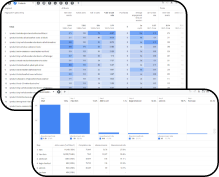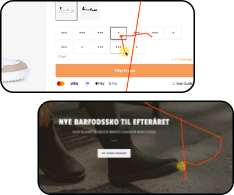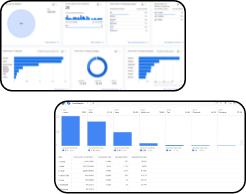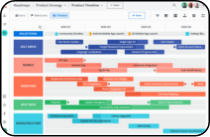Behavior & Journey Analysis
Understand why users don’t convert, and fix it at the root.
We map real customer journeys, spot friction and drop-offs, and give you a clear path to higher conversions.
See what your users see. Understand what they’re thinking.
Understanding What’s Happening
Google Analytics tells you that people are bouncing on page 3. But why?
Was it confusing? Too slow? Not what they expected?
We combine behavior data and journey mapping to reveal the truth — then use that insight to guide smarter decisions.
Some common painpoints
Confusing navigation
Visitors can’t easily find what they’re looking for, causing frustration.
Slow page load times
Pages that take too long to load lead to impatience and abandonment.
Lack of trust signals
Missing reviews, security badges, or guarantees make visitors hesitant.
Unexpected costs or fees
Surprise charges at checkout cause visitors to abandon their carts.
Unclear call to action
Unclear instructions make it hard for visitors to know what to do next.
Overwhelming choices
Too many decisions confuse users and delay purchasing.
Unclear product information
Lack of detailed descriptions or images leaves visitors uncertain.
Lack of social proof
No testimonials or customer stories reduce trust and confidence.
Our Method
From Friction to Fixes

Quantitative Data Deep Dive
From Google Analytics to event tracking, we find where drop-offs and loops are happening.

Heatmaps & Scroll Maps
We see what users are actually looking at, ignoring, or missing entirely.

Session Replay Analysis
Watch real people interact with your site — and spot common patterns of hesitation or frustration.

Funnel & Segment Breakdown
Analyze how behavior differs across devices, sources, or user types.

Insights → Roadmap
We summarize key behaviors and make clear, testable recommendations.
Frequently asked questions
What is behavior and journey analysis in CRO?
Behavior and journey analysis is the process of understanding how users interact with your website — from the first click to the final action. It looks beyond just numbers and dives into why visitors act the way they do. By analyzing behavior patterns, navigation paths, hesitations, and drop-off points, we identify what’s working, what’s confusing, and where improvements can be made. This insight helps us design changes that guide more users toward conversion.
How do you track what users do on my site?
We use a combination of tools like heatmaps, session recordings, click tracking, and scroll depth analysis to track how users navigate and interact with your site. These tools let us see where users click, what they ignore, how far they scroll, and where they drop off. Combined with analytics platforms like Google Analytics, this creates a clear picture of what users are doing — and more importantly, where they’re struggling or losing interest.
Can behavior analysis help reduce bounce rates?
Yes — and it often does. By identifying what causes users to leave quickly, behavior analysis reveals key friction points. For example, if users bounce because a page loads slowly, the content isn’t clear, or the next step isn’t obvious, we can pinpoint that through behavioral tools. Once identified, we recommend and test solutions designed to keep users engaged and moving through the site — reducing bounce rates and increasing your chances of conversion.
How do you know where users get stuck or drop off?
We identify user friction points through funnel analysis, session replays, click maps, and drop-off data. If users consistently exit on a certain page or fail to complete a form, we investigate the exact path they took, how they interacted with the page, and what might have caused confusion or hesitation. This allows us to zero in on specific obstacles in the journey and recommend targeted changes to keep users moving forward.
How does journey mapping improve conversions?
Journey mapping helps us visualize the full experience a user has on your site — from landing page to checkout (or wherever your goal is). By understanding each step, we can see where users get confused, distracted, or lost. This enables us to streamline the experience, remove unnecessary steps, clarify messaging, and design a smoother path to conversion. When the journey feels intuitive and effortless, users are far more likely to complete it.
Ready to take the
next step?
Then we are right answer
- When increasing ad-spend no longer works
- When you want to understand your users
- If you are a D2C e-commerce store
- If your traffic is over 5000 visitors/mo
